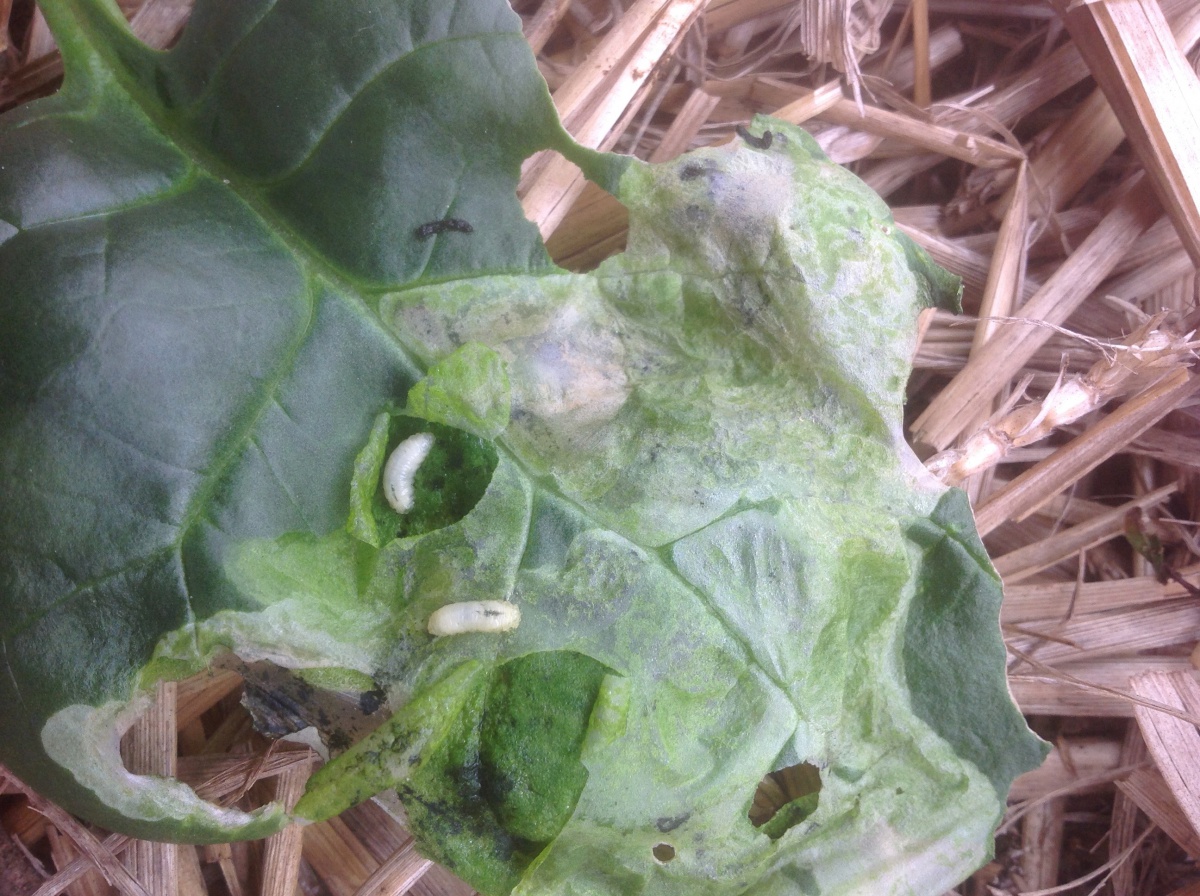Beet & spinach leafminer

In the last few years, New Hampshire growers have experienced some significant leafminer infestations on spinach, swiss chard and beet. The beet leafminer (Pegomya betae Curtis) and the spinach leafminer (Pegomya hyoscyami (Panzer)) are very similar in appearance and life cycle. Both primarily attack members of the family Chenopodiaceae including spinach, beet, swiss chard, and lambsquarter, but spinach leafminer has also been shown to attack plants from the families Solanaceae (nightshades) and Caryophyllaceae (especially Silene spp.). A side note: the major leafminers that attack spinach in California belong to a different genus, Lyriomyza.
Life cycle
The adult leafminer is a small fly (5-7mm), which lays elongated white eggs that measure around 1mm x 0.3mm. Once the eggs hatch, in 3-6 days, the larvae burrow immediately into the leaf. The larvae feed between the upper and lower leaf epidermis, forming transparent “mines” that eventually become large blotches. The larvae live for 7-12 days (depending on temperature), and then pupate, usually dropping into the soil first. New adult flies hatch after 10-20 days, except in late fall, when they enter diapause. The damage to the crop may be insignificant, or it may be very severe if attacked when leaves are at or near marketable stage.


Timing
The first adults from the overwintering pupae emerge in mid-Spring (April or May), and there are several generations per year, especially when host plants are present year-round, as with succession plantings. According to Cranshaw, activity is reduced in mid-summer, resulting in more damage in the cooler spring and fall. Other references suggest that crops grown very early and late in the season may escape injury – but it is worth noting that I have seen severe damage in late October in a high tunnel.
Management
One effective management strategy is to protect attractive crops with rowcovers to prevent egg-laying by adults. To work, this must also be coupled with good weed management and crop rotation: adult flies will emerge from soil near where infested crops or weeds were found the previous fall. Note that high tunnels with overwintered spinach may be an excellent overwintering site.
Several insecticides are labelled for this pest, but timing is critical: once larvae hatch, they feed within the leaf and are not reached by insecticides – and the damage has already been done. Scout spring transplants for the presence of eggs, which are easily seen using a hand lens on the undersides of leaves. Treat as soon as eggs are seen, and if any mines are present, scout again in 7-10 days to see if additional treatment is needed. Some systemic insecticides are registered for application to transplants or to the soil at planting time. Note that some products are labeled only for Swiss chard, but not beet or spinach. Among organic products, spinosad has demonstrated efficacy when applied before egg hatch. For specific materials and detailed recommendations, see the current New England Vegetable Management Guide. Click here and scroll down to find the section specifically on beet and spinach leafminer.
Sources:
- 2018-19 New England Vegetable Management Guide.
- Capinera, J.L. 2001. Handbook of vegetable pests, pp. 208-210.
- Cranshaw, W. 2004. Garden insects of North America, pp. 204-205.
